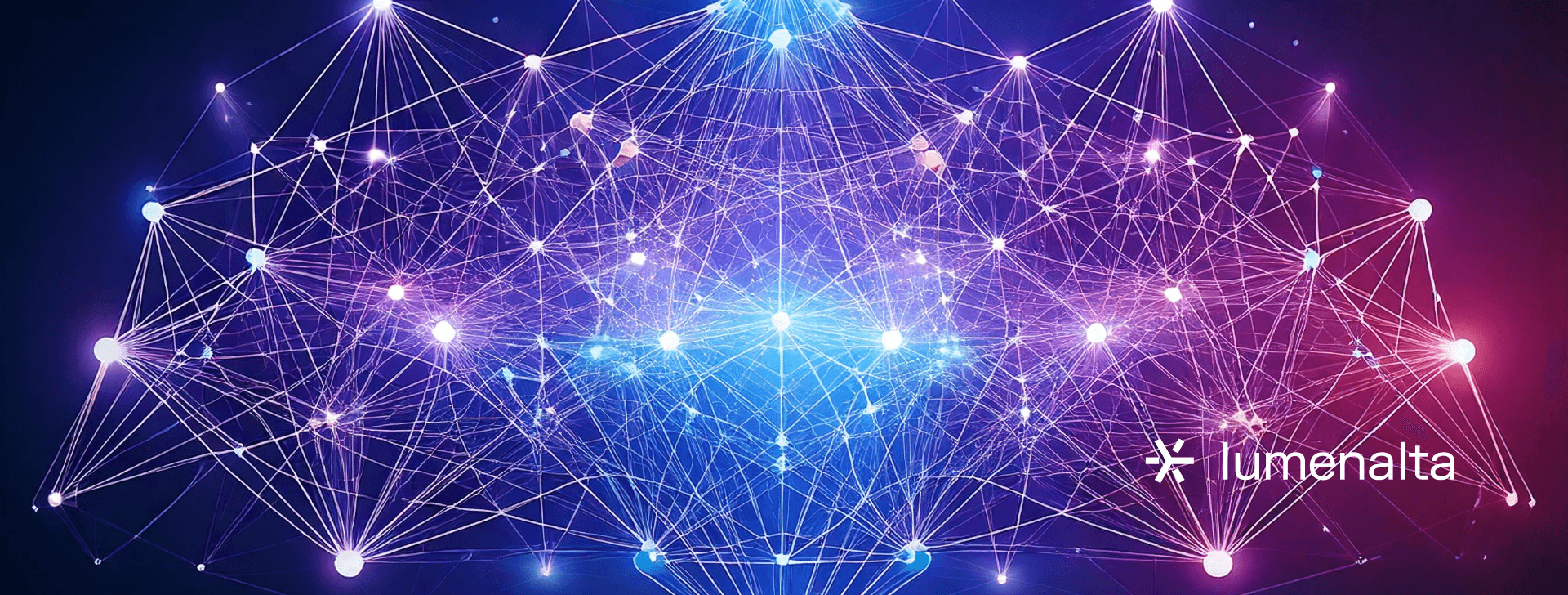

Bias in machine learning
DEC. 16, 2024
6 Min Read
Bias in machine learning threatens the accuracy, fairness, and reliability of AI systems, leading to flawed outcomes that impact industries and individuals alike.
Understanding the nature of bias, its origins, and its effects is critical for designing machine learning models that drive equitable and effective results. This blog demystifies the concept of bias and explores actionable strategies to address its pervasive influence in AI systems.
Key takeaways
- 1. Bias in machine learning arises from systemic issues in data, algorithms, or societal structures, impacting accuracy and fairness.
- 2. Variance highlights a model's sensitivity to training data, requiring careful trade-offs with bias to improve generalization.
- 3. Common types of bias include selection bias, sampling bias, and algorithmic bias, all of which influence model predictions.
- 4. Mitigating bias involves strategies like fairness-aware algorithms, diverse data auditing, and adversarial testing.
- 5. Real-world examples, such as biased facial recognition systems and healthcare models, highlight the pressing need to address AI fairness.
Understanding bias in machine learning

Bias in machine learning is a systematic error that skews predictions or decisions made by a model. This error can originate from the data, the model itself, or human oversight during the development process. In the context of machine learning, bias can manifest as inaccuracies, unfair outcomes, or unintended disadvantages for specific groups or use cases.
Bias often reflects the limitations or imbalances in the dataset used to train the model. For instance, if a dataset overrepresents one group at the expense of others, the model may learn patterns that unfairly favor the dominant group. Similarly, bias may arise from algorithmic choices that inadvertently prioritize some outcomes over others.
The consequences of machine learning bias extend far beyond technical performance. Biased models can perpetuate or even exacerbate social inequities, lead to flawed decision-making in critical areas like healthcare and finance, and erode trust in AI systems. To address bias effectively, it is essential to understand its origins, recognize its impacts, and explore actionable strategies for mitigation.
"Bias often reflects the limitations or imbalances in the dataset used to train the model, leading to unfair outcomes for specific groups or use cases."
What is variance in machine learning?

Variance in machine learning refers to the sensitivity of a model to small changes in the training data. Models with high variance often perform exceptionally well on training data but struggle to generalize to unseen data, leading to overfitting. This happens because the model learns not only the underlying patterns but also the noise in the training dataset.
Variance is an inherent aspect of model performance that must be carefully managed. While low variance is desirable for consistent predictions, achieving it often requires balancing other factors like bias. Models with very low variance may oversimplify the problem, ignoring key patterns in the data.
Understanding the relationship between bias and variance is crucial for optimizing machine learning models. This balance, often referred to as the bias-variance tradeoff, determines how well a model performs on both training and unseen datasets. A model with high variance but low bias may achieve perfect accuracy on training data while failing to deliver meaningful results in real-world applications.
Types of bias in machine learning

Bias in machine learning can take various forms, each arising from different stages of the data or model development process. Addressing these types of bias is essential to ensure fairness, accuracy, and reliability in predictions.
- Selection bias: This occurs when the training data is not representative of the overall population. For example, a model trained on data collected from urban areas may not perform well in rural contexts.
- Confirmation bias: If data collection or model training reinforces existing assumptions, it can lead to confirmation bias. This type of bias often results from preconceptions held during the development process.
- Sampling bias: Insufficient or improperly sampled data leads to models that overrepresent or underrepresent certain groups. For instance, an image recognition model trained mostly on lighter-skinned individuals may fail to accurately classify darker-skinned individuals.
- Measurement bias: This arises from inaccuracies in how data is measured or recorded. For example, biased sensors or flawed survey designs can introduce systematic errors in data collection.
- Algorithmic bias: Choices made during algorithm design, such as feature selection or objective functions, can create biases. For example, models optimized for accuracy alone may overlook fairness constraints.
- Societal bias: Preexisting inequities in societal structures may be mirrored in the training data. For example, historical hiring practices reflected in HR data can perpetuate gender or racial discrimination when used in AI hiring tools.
Addressing these biases requires a proactive approach, starting from data collection and extending to algorithm design, model evaluation, and deployment. By recognizing the specific types of bias, teams can adopt targeted strategies to mitigate their effects and improve overall model fairness and effectiveness.
Impact of bias on machine learning models

Bias in machine learning models can significantly impact their accuracy, fairness, and reliability. When biased data is used for training, models may reinforce existing inequalities or produce skewed predictions, disproportionately affecting certain groups or scenarios. For instance, bias in healthcare data could lead to inaccurate diagnoses for underrepresented populations, while bias in hiring algorithms might perpetuate discrimination. These issues not only undermine trust in AI systems but can also have serious ethical, legal, and business implications. Addressing bias is critical to ensure models are equitable, transparent, and effective across diverse applications.
"Biased models can perpetuate or even exacerbate social inequities, lead to flawed decision-making in critical areas, and erode trust in AI systems."
Strategies to mitigate bias in machine learning

Mitigating bias in machine learning requires a systematic approach that spans data collection, model development, and evaluation. Addressing bias ensures fairer and more reliable outcomes, fostering trust in AI systems. The following strategies provide actionable steps to reduce bias across the lifecycle of a machine-learning project:
Audit and preprocess data for fairness
Data is a critical factor in machine learning bias. Conducting thorough audits of datasets helps identify and correct imbalances or inaccuracies. For example, ensuring representation across demographic groups can improve the fairness of predictions. Data preprocessing techniques, such as resampling or reweighting, can also address imbalances by equalizing contributions from underrepresented categories.
Implement fairness-aware algorithms
Bias can be addressed during the algorithm design phase by incorporating fairness constraints. Fairness-aware algorithms optimize for equity alongside traditional metrics like accuracy. Techniques such as adversarial debiasing, where models learn to minimize unfair outcomes while maximizing predictive performance, can promote balanced results for different subgroups. These algorithms ensure that decisions align with ethical guidelines and societal expectations.
Monitor metrics during model training
Standard evaluation metrics like accuracy often mask biases present in specific subgroups. Introducing fairness metrics—such as disparate impact, equalized odds, or demographic parity—into the model evaluation process provides a deeper understanding of how the model performs across diverse populations. Continuous monitoring of these metrics during training enables developers to detect and address biases early, allowing for iterative improvements in fairness and performance.
Conduct adversarial testing
Adversarial testing helps expose biases by simulating scenarios that are not well-represented in the training data. Stress-testing a model against edge cases or minority scenarios ensures it performs equitably under diverse conditions. This proactive approach highlights vulnerabilities that might otherwise go unnoticed, enabling teams to refine models for robustness and inclusivity.
Engage diverse stakeholder groups
Bias mitigation benefits greatly from the inclusion of diverse voices throughout the machine learning lifecycle. Collaboration with stakeholders—such as domain experts, ethicists, and representatives of affected communities—helps identify potential blind spots and align models with societal values. This inclusive approach ensures that the design and deployment of AI systems reflect a broader range of perspectives and needs.
Mitigating bias is not a one-time effort but an ongoing process. Each strategy plays a vital role in ensuring that machine learning models are fair, accurate, and aligned with ethical guidelines. Proactively addressing bias safeguards the integrity and usability of AI systems across industries.
Real-world examples of bias in machine learning
Bias in machine learning has surfaced in a variety of high-profile applications, demonstrating the real-world consequences of unchecked systems. These examples highlight the urgent need to address bias during the development and deployment of AI models:
- Facial recognition systems: Many facial recognition models have been found to perform poorly on darker skin tones, leading to higher rates of false positives or misidentifications. This issue underscores the lack of diverse representation in the training data, raising ethical and legal concerns.
- Hiring algorithms: Certain AI-driven hiring tools have shown bias against women, particularly for roles in technology and leadership. These systems, trained on historical hiring data, often inherit biases that reflect past inequities, reinforcing barriers rather than eliminating them.
- Healthcare predictions: Bias in healthcare models has led to disparities in medical recommendations. For example, an algorithm used to allocate healthcare resources was found to prioritize white patients over Black patients with similar medical needs, due to flawed assumptions embedded in the data.
- Credit scoring models: Machine learning systems used to determine creditworthiness have displayed bias against minority groups. These models often rely on historical lending data, which can reflect systemic discrimination in financial practices.
- Predictive policing: AI systems designed to predict criminal activity have disproportionately targeted certain communities. Historical crime data, often biased against marginalized groups, amplifies disparities in law enforcement and perpetuates harmful cycles.
Addressing these real-world examples of bias requires intentional efforts to design systems that prioritize equity and fairness. Understanding the root causes of bias in these scenarios provides valuable insights for creating machine learning solutions that benefit all users.
Addressing bias for better AI outcomes
Addressing bias in artificial intelligence (AI) is crucial for developing systems that are fair, reliable, and widely applicable. Bias in AI arises from various sources, including unbalanced datasets, flawed assumptions during model development, or the inadvertent exclusion of certain groups. Left unchecked, this can lead to discriminatory outcomes, reduced accuracy, and loss of trust in AI systems. For example, biased AI in hiring tools might favor one demographic over another, or healthcare models may underperform for underrepresented patient groups. Tackling these issues ensures AI systems are equitable and deliver better outcomes across diverse applications.
To address bias effectively, organizations must adopt a proactive, multi-faceted approach throughout the AI lifecycle. This includes auditing datasets to identify and correct imbalances, applying fairness-aware algorithms that optimize for equity, and integrating fairness metrics into model evaluations. Engaging diverse stakeholders, such as domain experts and representatives from affected groups, adds critical perspectives that minimize blind spots during development. Regular retraining and validation ensure that models remain relevant and fair as societal contexts evolve. By embedding bias mitigation strategies into the AI development process, organizations can create systems that not only perform better but also uphold ethical standards, fostering trust and long-term success.
Ultimately, addressing bias is essential for creating AI systems that are not only effective but also fair and socially responsible. Through intentional design, continuous monitoring, and collaborative approaches, you can build machine learning models that deliver on their promise of transformative innovation without compromising ethical integrity.
AI systems are only as effective as they are fair. At Lumenalta, we understand that addressing bias is not just a technical necessity but a moral imperative. Our tailored machine learning solutions are designed to promote equity, transparency, and reliability at every stage, ensuring your AI initiatives deliver impactful, ethical outcomes. Together, we can create smarter, fairer technologies that drive meaningful change. Let’s light the way to a brighter, more inclusive future.
Table of contents
- Understanding bias in machine learning
- What is variance in machine learning?
- Types of bias in machine learning
- Impact of bias on machine learning models
- Strategies to mitigate bias in machine learning
- Real-world examples of bias in machine learning
- Addressing bias for better AI outcomes
- Common questions about bias in machine learning
Common questions about bias in machine learning
What is bias in machine learning, and why does it matter?
How does bias differ from variance in machine learning?
Can bias in machine learning models be eliminated completely?
What are the consequences of biased AI systems?
Organizations can mitigate bias by auditing datasets, using fairness-aware algorithms, monitoring performance metrics, and involving diverse stakeholders throughout development.
Want to learn how machine learning can bring more transparency and trust to your operations?








